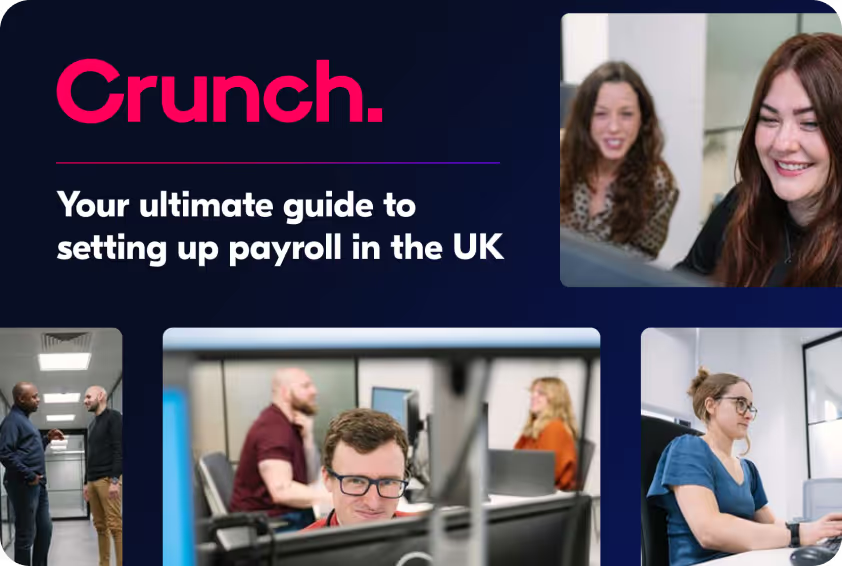Tax codes are used by employers and pension providers to show how much income tax you’ll have to pay on your salary or pension. Your tax code will be provided to you by HMRC and can be found in a number of ways. Our article gives you a complete guide to your tax code and what it means.
Where to find your tax code
There are a few different places where you can find your tax code.
- Your payslip from your employer
- If you check your tax code for the current tax year online. You’ll also be able to see the previous year’s tax code too. If you haven’t already, you’ll need to create a personal tax account.
- Through the HMRC app
- On a tax code notice letter if you receive one from HMRC.
{{tax-guide}}
What your tax code means
A tax code is made up of one letter and three or four numbers. The numbers are used to identify the personal allowance amount that you’re entitled to for that tax year depending on your working situation. You won’t be required to pay income tax until you’re earning over the personal allowance figure, which is £12,570 for the 2024/25 and 2025/26 tax years.
If for some reason your tax code changes, HMRC will usually be in touch with you to confirm why it’s changed and what it means.
The most common tax code is 1257L as it’s given to anyone who has one job, no untaxed income, unpaid tax, a pension, or taxable benefits (such as a company vehicle).
What does the number in your tax code mean?
The numbers in your tax code are used to tell HMRC and your employer how much income you’ll earn that year that’s tax-free.
Your tax code number is worked out by HMRC from your tax-free personal allowance and any untaxed income. They’ll also review any benefits you receive from your jobs such as company cars, accommodation, or loans.
Using the most common tax code as an example, 1257L, the number 1257 shows HMRC that you’re entitled to earn the full personal allowance amount before having to make a payment in tax. If your number appears lower, this could be due to any expenses you’re claiming, such as company cars, uniforms, or any benefits in kind you receive from your employer.
What does the letter in your tax code mean?
HMRC explains that the letters in your tax code “refer to your situation and how it affects your Personal Allowance”. So in other words, what your employment status is, how much you earn, and the effect all of this has on your UK personal allowance amount.
As each letter indicates something different, we’ve broken it down for you:
If you have a code including W1, M1, or X, these would be emergency tax codes which we cover in the next section.
Emergency tax codes
If you see 1257 W1, 1257 M1, or 1257 X as your tax code, this is because you’ve got an emergency tax code. There are a few reasons why someone may have an emergency tax code but this is usually because HMRC hasn’t got your change in income details in time after you’ve had a change of circumstances, such as a new job, changing from self-employed to working for an employer, and getting company benefits or a state pension.
These tax codes are usually a temporary code. Once the correct details have been handed over to HMRC, they’ll correct your tax code for you. If your change in circumstances has resulted in you paying less tax than you’re required to pay, then you’ll stay on the emergency tax code until you’ve paid the correct amount of tax for the year.
Starting a new job
When you leave a previous employer, you should receive a P45. This should be handed over to your new employer to provide HMRC with the details they need. If you haven’t received a P45 from your previous employer, you may be asked by your new employer to fill in a new starter form or provide them with the information they need.
Going from self-employed to an employer
Your new employer should give you a new starter form, also known as a ‘new starter checklist’, which is used to tell them details about your previous employer.
Company benefits and state pension
We’d advise that you check your tax code to ensure your company benefits and state pension is reflected in your tax code. If you find that it isn’t included then you’ll need to update your details for your tax code online or get in touch with HMRC to inform them. You may be given an emergency tax code until the end of the tax year to catch up on the tax you need to pay. It’ll then be put back to its regular code when the new tax year starts.
Why might your tax code change
There’s a long list of reasons that your tax code might change:
- You’re getting extra income from another job, side hustle, or pension
- HMRC are informed by your employer that you have started getting or stopped getting any benefits from your job
- You’re getting taxable state benefits
- You’re claiming expenses that you get tax relief from
- You’re claiming a marriage allowance
If you’ve recently changed your job, you might’ve been put on an emergency tax code. If you're worried that you have an incorrect tax code, you can check your details online in a few simple steps. or alternatively you can contact HMRC directly to update your code.
Changing your tax code
HMRC has a handy ‘Get help understanding your tax code tool’ which can help you find out more about the impact your tax code will have on the amount of tax you’ll pay and what you might need to do about this. When you use this service, you might be asked about your income annually before any deductions have been made, how much you receive in state pension each year, and any benefits you get from your employer or previously used to receive.
Income tax calculator
If you want to work out an estimation of the tax you’ll pay on your income, take a look at our helpful income tax calculator. Use it to plan your estimated earnings for the year and how much you’ll owe HMRC.
For more assistance in calculating your finances and outgoings, check out our Crunch subscriptions to get access to qualified accountants, expense tracking, bookkeeping, and open banking.

.svg)



.webp)












.avif)


